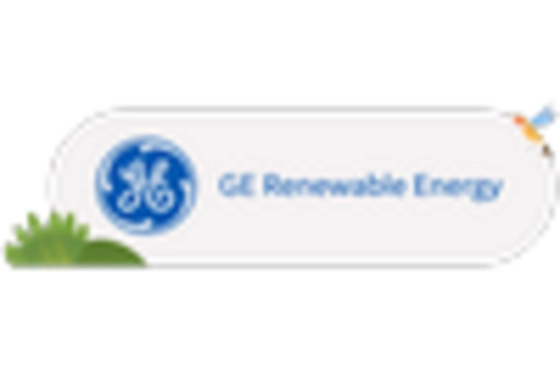Rising Energy Demand
The Asia-Pacific Offshore Wind Market is experiencing a surge in energy demand, driven by rapid urbanization and industrialization across the region. Countries such as China and India are witnessing significant increases in electricity consumption, necessitating the development of renewable energy sources. According to recent estimates, the region's energy demand is projected to grow by approximately 4% annually over the next decade. This escalating demand creates a favorable environment for offshore wind projects, as they offer a sustainable solution to meet energy needs while reducing carbon emissions. The Asia-Pacific Offshore Wind Market is thus positioned to play a crucial role in addressing this growing energy gap, potentially leading to increased investments and advancements in technology.
Investment Opportunities
The Asia-Pacific Offshore Wind Market is attracting substantial investment, driven by the increasing recognition of offshore wind as a viable energy source. Financial institutions and private investors are increasingly channeling funds into offshore wind projects, with investments in the sector expected to exceed USD 50 billion by 2030. This influx of capital is essential for the development of new projects and the expansion of existing ones. Furthermore, partnerships between governments and private entities are becoming more common, facilitating the sharing of resources and expertise. As investment opportunities continue to grow, the Asia-Pacific Offshore Wind Market is poised for significant expansion, potentially leading to enhanced energy security and job creation.
Technological Advancements
Technological advancements are a key driver of the Asia-Pacific Offshore Wind Market, facilitating the deployment of larger and more efficient wind turbines. Innovations in turbine design, such as floating wind farms, are expanding the geographical scope for offshore wind projects, particularly in deeper waters. The average capacity of offshore wind turbines has increased significantly, with some reaching capacities of over 10 MW. This trend not only enhances energy output but also reduces the cost per megawatt-hour, making offshore wind more competitive with traditional energy sources. As technology continues to evolve, the Asia-Pacific Offshore Wind Market is likely to witness accelerated growth, driven by improved efficiency and reduced operational costs.
Environmental Sustainability Goals
The Asia-Pacific Offshore Wind Market is increasingly aligned with global environmental sustainability goals, as countries strive to reduce greenhouse gas emissions and combat climate change. The transition to renewable energy sources, particularly offshore wind, is seen as a critical component of national strategies to achieve carbon neutrality. For example, China has committed to reaching carbon neutrality by 2060, with offshore wind playing a pivotal role in this transition. The growing emphasis on sustainability is likely to drive further investments in the Asia-Pacific Offshore Wind Market, as stakeholders recognize the long-term benefits of clean energy solutions. This alignment with environmental goals not only enhances the market's appeal but also fosters innovation and collaboration among industry players.
Government Initiatives and Policies
The Asia-Pacific Offshore Wind Market benefits from robust government initiatives aimed at promoting renewable energy. Various countries in the region have established ambitious targets for offshore wind capacity, with nations like Japan and South Korea setting goals to significantly increase their offshore wind installations by 2030. For instance, Japan aims to achieve 10 GW of offshore wind capacity by 2030, while South Korea has set a target of 12 GW. These policies not only provide a clear framework for investment but also enhance investor confidence, thereby stimulating growth in the offshore wind sector. The supportive regulatory landscape is likely to attract both domestic and international players, further propelling the Asia-Pacific Offshore Wind Market.

















Leave a Comment